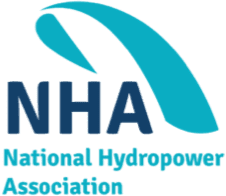- Show all
- Asset Management
- Buoy
- Canal
- Climate Change
- Controls
- Dam Safety
- Environmental Impact
- Fish and Aquatic Resources
- Future Grid
- Generator
- Governor
- Hydraulic Forecasting
- Hydraulic Optimization
- Hydrokinetic
- Intake Gates
- Markets
- Penstock
- Regulatory Process
- Renewable Integration
- Sediment Transport
- Shoreline and Riparian Resources
- Spillgates
- Tidal
- Transmission Services
- Turbine
- Water Management
- Water Resources
- Water Systems
- Wave
Pumped Storage
A Comparison of the Environmental Effects of Open-Loop and Closed-Loop Pumped Storage Hydropower
Lead Companies
Pacific Northwest National Laboratory
Lead Researcher (s)
- Bo Saulsbury
Pumped storage hydropower (PSH) is a type of energy storage that uses the pumping and release of water between two reservoirs at different elevations to store water and generate electricity. When demand for electricity is low, a PSH project can use low cost energy to pump water from the lower reservoir to the upper reservoir for storage. When demand for electricity is high, a PSH project can release water from the upper reservoir through a powerhouse to generate electricity. Traditionally, this meant that PSH plants generated power during the day and pumped at night, with modest diurnal or seasonal variation. Today, PSH pumping operations are changing to facilitate the integration of the tremendous growth of variable renewable energy (VRE) generating resources, especially wind and solar, on the U.S. grid. PSH facilities are often a least cost option for high capacity (both energy and power), long-duration storage, and can provide the flexibility and fast response that a high-VRE-penetration grid requires. PSH faces its own set of challenges in construction and operation, however, including high initial capital costs, long construction timeframes, uncertainty in revenue streams (similar to all storage), and potential environmental impacts. The U.S. Department of Energy’s (DOE) HydroWIRES initiative includes research to address each of these challenges. This report focuses on potential environmental impacts: specifically, the degree to which impacts can be reduced by using closed-loop pumped storage systems as opposed to the traditionally more common open loop systems.
Technology Application
Pumped Storage
Research Category
Environmental and Sustainability
Research Sub-Category
Status
complete
Completion Date
2020
Pumped Storage
Addressing Barriers to Energy Storage in Transmission Planning and Operations [HydroWIRES]
Lead Companies
PNNL, ANL
Lead Researcher (s)
- Jeremy Twitchell, Jeremy.twitchell@pnnl.gov
A complex set of technical and regulatory issues creates significant barriers that prevent PSH and other forms of energy storage from accurate representation in transmission planning and operational processes. These barriers are numerous and complex, and a full evaluation of them has not yet been done. As a result, current transmission planning, deployments and operations may be inefficient and, ultimately, may result in higher costs for customers. This project will identify those barriers, create a proposed participation model for PSH to provide transmission and market functions, and conduct a techno-economic analysis of PSH that fully quantifies its technical capability and economic value as a transmission asset. Technology Application
Pumped Storage
Research Category
Interconnect Integration and Markets
Research Sub-Category
Transmission Services
Status
ongoing
Completion Date
TBD
Conventional Hydro
Advanced Manufacturing Roadmap Development
Lead Companies
Oak Ridge National Laboratory (ORNL)
Lead Researcher (s)
- Mirko Musa (musam@ornl.gov)
During the last decade, advanced manufacturing has revolutionized the energy sector, boosting the U.S. manufacturing industry and opening pathways to increased American competitiveness. While these novel applications of advanced manufacturing have ushered in benefits in other energy sectors, the potential benefits for hydropower applications remain largely unexplored. To improve our understanding and identify key advanced manufacturing technologies for both existing and future hydropower development, this study will establish an advanced manufacturing roadmap/strategy for hydropower to identify high-impact opportunities that address critical challenges for hydropower.
Technology Application
Conventional Hydro, Pumped Storage
Research Category
Research Sub-Category
Status
ongoing
Completion Date
TBD
Pumped Storage
Analysis of the Effects of Pre-whirl on the Efficiency and Operating Range of Hydro Pumps used in Pumped Storage Facilities
Lead Companies
The Pennsylvania State University
Lead Researcher (s)
- Keith Martin
This paper discusses the application of computational fluid dynamics (CFD) to a case study of a hydraulic pump turbine operating in pumping mode. Emphasis is on the effects of induced pre-whirl on flow patterns through the impeller and on pump performance. ANSYS R Fluent, Academic Research, Release 14.0, software is used to model three-dimensional (3D) Reynolds-averaged Navier-Stokes (RANS) equations with a k − ω SST turbulence model. Full-wheel fixed rotor simulations are used to identify operating parameters that are used in more computationally intensive full-wheel moving mesh simulations.
Technology Application
Pumped Storage
Research Category
Powerhouse Pump
Research Sub-Category
Turbine
Status
complete
Completion Date
2015
Conventional Hydro
Annual Hydropower Market and Trends Report
Lead Companies
Oak Ridge National Laboratory (ORNL)
Lead Researcher (s)
- Rocio Uria Martinez (uriamartiner@ornl.gov)
This project informs the Water Power Technologies Office's research and development planning and provides stakeholders with comprehensive and up-to-date data and analysis on U.S hydropower and pumped storage hydropower assets and industry trends. The main deliverable from this project is the U.S. Hydropower Market Report (HMR) which is intended to be a foundational reference publication on U.S. hydropower development, performance, and supply chain trends for industry and other stakeholders such as other federal partners and policymakers. Technology Application
Conventional Hydro, Pumped Storage
Research Category
Interconnect Integration and Markets
Research Sub-Category
Markets
Status
ongoing
Completion Date
TBD
Pumped Storage
Charting Hydropower’s Role in the Next-Generation Grid
Lead Companies
NREL
Lead Researcher (s)
- Stuart Cohen
To build a 100% clean energy power sector, the United States is adding more energy storage and variable renewable energy sources, like solar power and wind energy, to the grid. Hydropower and pumped storage hydropower (PSH) can help with both. These technologies already play a key role in providing flexible, low-carbon electricity to the U.S. power grid, and this role will become even more valuable as that grid evolves. That’s why researchers at the National Renewable Energy Laboratory (NREL) are analyzing how the U.S. electricity sector could invest in hydropower and PSH using new data and modeling capabilities.
Technology Application
Pumped Storage
Research Category
Research Sub-Category
Status
complete
Completion Date
2022
Pumped Storage
Closed-Loop Pumped Storage Hydropower Motivations and Considerations
Lead Companies
EPRI
Lead Researcher (s)
- Joe Stekli
In order to integrate large-scale renewable energy generation projects, energy storage—at both the transmission and distribution levels—is essential. A 2018 report from the U.S. Department of Energy forecasted an opportunity for 36 GW of new pumped storage capacity in the United States by 2050. Pumped-storage hydropower (PSH) is the market-leading and most established form of grid-related energy storage in the world today. Its numerous benefits versus other long-duration, grid-scale energy storage technologies include low levelized lifecycle cost. Closed-loop PSH technology, which relies on manmade reservoirs not connected to rivers, lakes, or other natural water features, has been proposed as a way to avoid some of the siting and permitting challenges associated with traditional open-loop PSH. However, the extent to which some siting and permitting challenges can be avoided by closed-loop PSH systems might be limited by project characteristics, such as the clearing of previously undisturbed land and the need for surface or groundwater sources for initial reservoir fill and periodic water withdrawals. Although various regulatory and policy frameworks are advancing to promote the development of closed-loop PSH, there is still variability in how such projects are defined and uncertainty regarding the market and environmental sustainability of such projects relative to competing technologies.
Technology Application
Pumped Storage
Research Category
Research Sub-Category
Status
complete
Completion Date
2020
Pumped Storage
Commissioning Prize for Pump Storage
Lead Companies
PNNL
Lead Researcher (s)
- Bo Saulsbury
Furthering Advancements to Solve Time to Commissioning Prize (FAST Commissioning Prize) that will seek innovative ideas on ways to reduce the time and costs associated with PSH from concept to commissioning. PNNL supports the technical analysis, as well as the voucher program to be supplied to prize finalists and winners.
Technology Application
Pumped Storage
Research Category
Regulatory Management Process
Research Sub-Category
Status
ongoing
Completion Date
TBD
Pumped Storage
Cost Effective Small Scale Pumped Storage Configuration [HydroWIRES]
Lead Companies
Obermeyer Hydro
Lead Researcher (s)
- Greg Stark, greg.stark@nrel.gov
Since 2000 only one new pumped storage hydropower project has been constructed in the United States. In order to increase the future opportunity for pumped storage development, reductions in cost and scale are necessary. Historically, pumped storage projects have required large capacity to overcome the fixed costs associated with custom engineering of complex underground structures with associated geological risk. The Obermeyer Hydro submersible pump-turbine offers a standard, scalable solution which reduces underground construction and risk. Technology Application
Pumped Storage
Research Category
Powerhouse Equipment
Research Sub-Category
Turbine
Status
ongoing
Completion Date
TBD
Pumped Storage
Development of Long-Duration Energy Storage in Electric Power Systems
Lead Companies
EPRI
Lead Researcher (s)
- Joe Stekli
Energy storage is a topic of increasing interest for purposes of decarbonization of the electric power system, and in particular to address integration of increasing quantities of variable energy resources, such as wind and solar PV. A growing focus of decarbonization analyses is the need for new long-duration storage and the potential change in operations of existing pumped storage hydropower. A limitation of much of the analysis on this topic to date has been the limited consideration of how the economic value of long-duration storage will be affected by the large deployments of short-duration energy storage, primarily lithium-ion BESS, which are currently receiving state policy support (through mandates or financial incentives) or are otherwise expected to enter the market based upon increasingly favorable economics.. The contribution of this article is to review the literature on this topic, update some simulation results, and help to advance the methodological questions which need to be addressed in subsequent simulation studies. The article examines each of the major components of potential long-duration storage value, including energy time-shift, different ancillary services, and Resource Adequacy (RA) capacity. It also draws attention to how state policies, resource planning methods, and market structure and regulatory factors can influence selection of different types of energy storage, whether short- or long-duration.
Technology Application
Pumped Storage
Research Category
Interconnect Integration and Markets
Research Sub-Category
Markets
Status
complete
Completion Date
2020
Don’t see your waterpower research?
Have questions about WaRP?
Contact Marla Barnes at: marla@hydro.org



